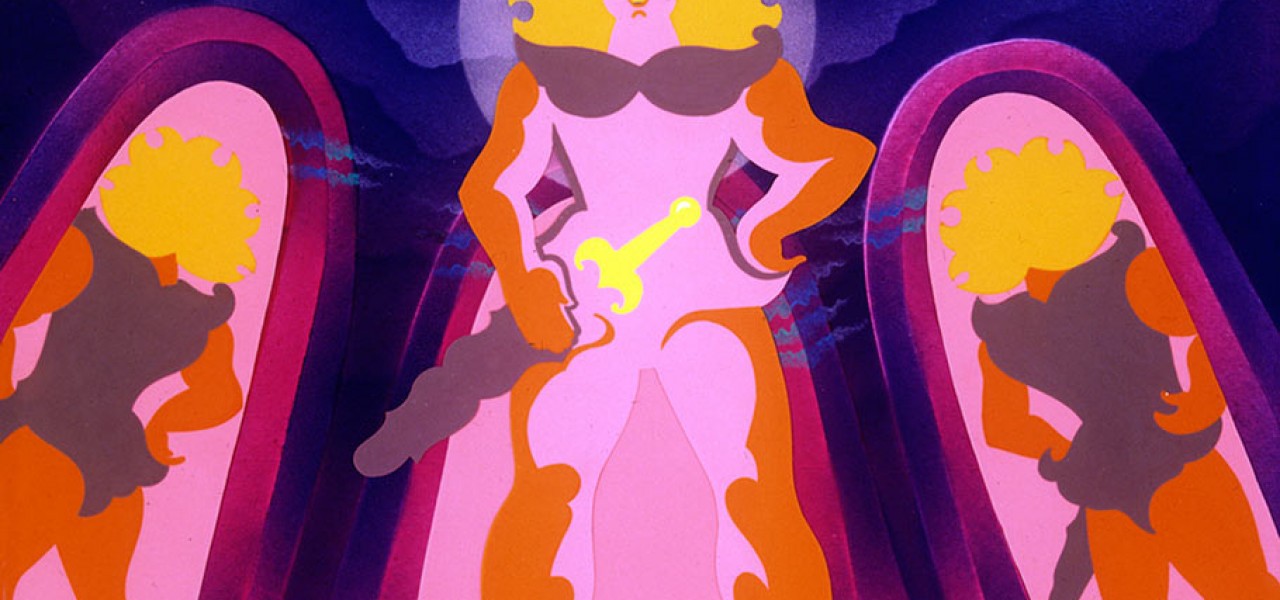
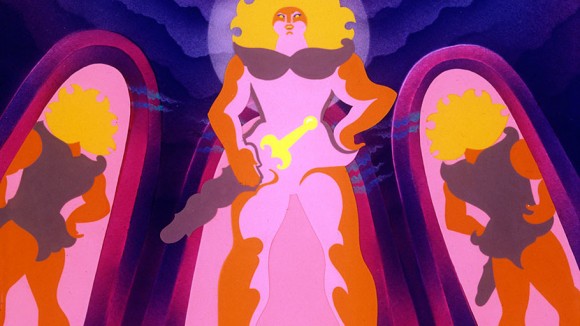
Marcell Jankovics Q&A: “Why Would One Imitate Reality?”
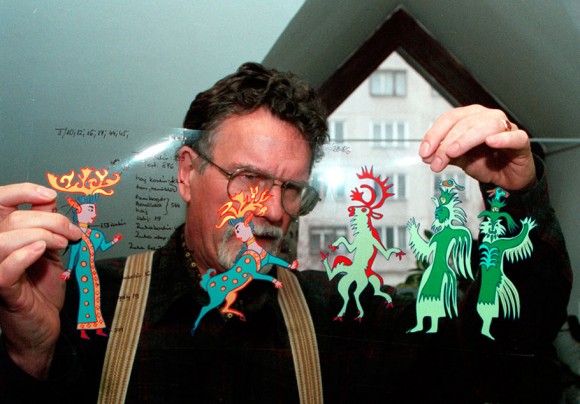
Hungarian animation director Marcell Jankovics has been creating incredible animation for the past half-century: more than 200 animated titles including commercials, shorts, television series, and feature films.
Jankovics drew comics as a young man, inspired by the stories of Oscar Wilde and Ray Bradbury. In 1960, when he was 19 years old, he got a job with Budapest-based Pannonia Film Studios. It took him just five years to climb the career ladder from in-betweener to director, co-directing the popular animated series Gusztáv (Gustav) in 1964. Jankovics went on to direct Hungary’s first feature film, János Vitéz (Johnny Corncob) in what was at the time the country’s only animation studio.
His latest released feature film, The Tragedy of Man (2011), a two-hour-and-forty-minute epic based on the classic Hungarian dramatic poem of the same name, was almost thirty years in the making.
Despite being busier than ever, Jankovics took some time out recently to respond to questions from Cartoon Brew about his diverse oeuvre and his innovative approach to animation design.
CARTOON BREW: First of all, your involvement in Disney’s Emperor’s New Groove is quite surprising. How did this come about and what was the experience like for you?
MARCELL JANKOVICS: Originally the film’s title was Kingdom of the Sun and its director was Roger Allers. My film Fehérlófia (1981) was recommended to him by Charles Solomon, the animation critic and historian, and Roger invited me.
I was interested. It suited me. The story at the time—a young Quechuan llama shepherd becomes an Inca and unites with his lover after great adventures—both mythical and historical, was very similar to my movie János Vitéz.
Also, I needed the money to continue working on The Tragedy of Man. Disney gave me a generous offer; I asked them to double it. In the end we came to terms. Plus, I wanted to see the studio. So I said yes.
For two-and-a-half months I worked on inventing and designing the storyboard for a mythical prologue. Two weeks I spent in Burbank, the rest of the time I worked from home. Roger and his staff seemed to be content with my work.
Then the top management replaced Roger—Burbank’s most successful director up to that time after Walt Disney—with Mark Dindal. The script was rewritten, and what I had made wasn’t used in the ruined, stupid, kitschy final version.
Still, my name is in the credits. I learned a lot and made friends with the people there. Even today I use a few colored pencils I filched from the studio.
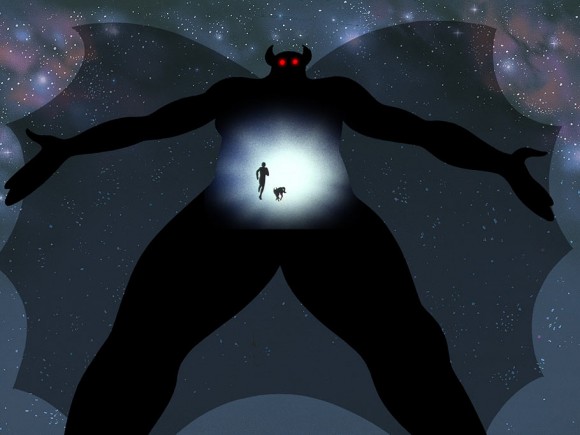
CARTOON BREW: You’ve worked on your latest feature film, The Tragedy of Man (2011) for almost 30 years. What made you want to commit yourself to this project for such a long period of time?
MARCELL JANKOVICS: The poem it’s based on [by Hungarian Imre Madách] was written in 1861, but it contains messages that are timeless, even to our generation—and not just to us Hungarians. Madách’s message about the significance of persistence is very important to me. I am a great fighter. Working on one and the same production for all this time proves it.
Also, I was displeased with the stage and live-action film adaptations of The Tragedy of Man. They are wearisome. Madách didn’t write The Tragedy for the stage. His fantasy calls for visual effects, symbolic expression. This, I felt, was the arena of animation.
CARTOON BREW: Did your vision for the film change during that 28 years?
My vision for the film didn’t change, but the realization process did. Around 1989, when I got the first sum of money, there were political changes in Hungary [1989 saw the end of Communism in the country] which made me freer to express myself and communicate my ideas more clearly.
The digital revolution had an impact on the film as well. Up until the end of the [20th] century we had worked on the film in the traditional way, copying the drawings on cels and shooting them with a rostrum camera. Then we switched to the computer, which offered new solutions and inspiration.
In those 28 years, The Tragedy took away six whole years from my life in total. On the side I wrote a dozen books, created television documentaries, illustrated novels and fairytales, taught at university, appeared on television, participated in conferences, accepted office positions in cultural fields, and so on.
CARTOON BREW: So censorship was an issue for you under Communism?
MARCELL JANKOVICS: For Fehérlófia (Son of the White Mare), I had originally constructed a basic tale out of several folktales, which explored the concept of the recurring nature of time and space. But the studio manager wouldn’t allow us to make it because of its anti-Marxist interpretation of time! According to Marxism, time is irreversible. Because of this I had to start again with an original folktale.
CARTOON BREW: How does your background in drawing and graphic design influence your vision as an animation director?
MARCELL JANKOVICS: As far as I can remember, I’ve always thought in pictures and had a vivid imagination. In my animated films the design of every frame is of great importance, as if it would be a painting. Most of the time, and particularly in a mythical, fabulous context, my human characters, even lead characters, are only a minor part of the whole image.
To try to express realistic human behavior in animation has limitations. Such attempts in serious animation are often absurdly ridiculous. Why would one imitate reality? Just leave it to living actors! Earthbound reality is not for animation. Animation is a stylized, fantastic world.
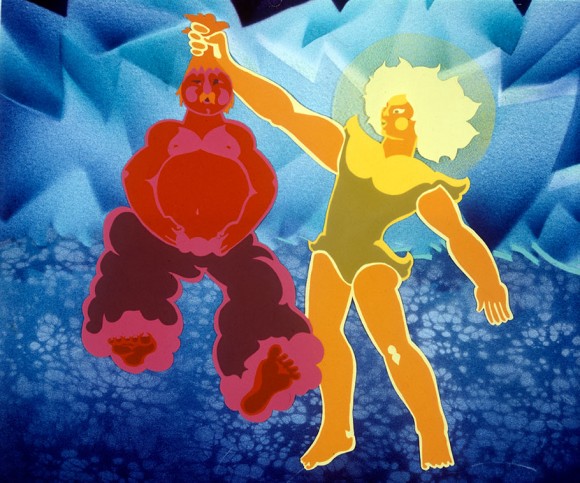
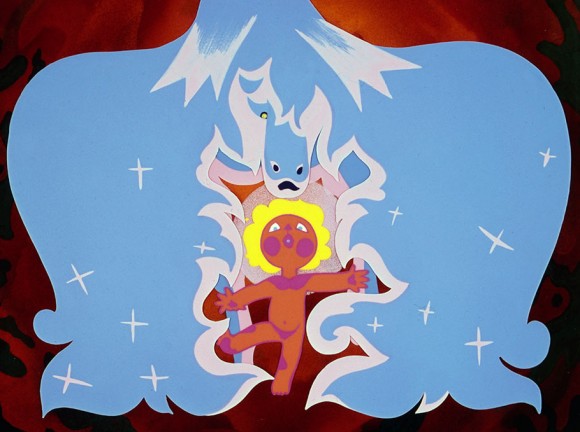
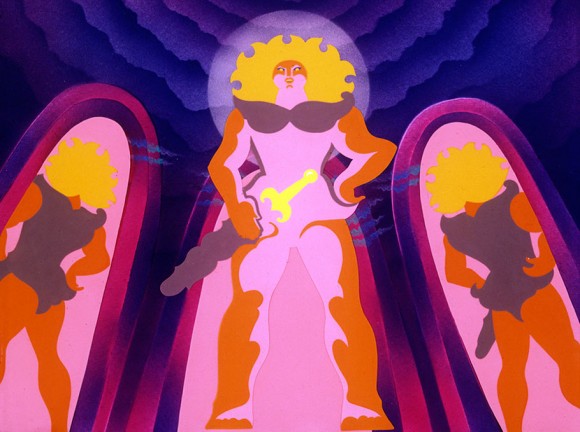
CARTOON BREW: Your graphic compositions, like the circular layouts you used in Fehérlófia, are unique in animation. Can you tell us about your approach to animation design?
MARCELL JANKOVICS: The idea comes first, then comes the graphic approach. I plan carefully. Of course sometimes instinct takes priority, but those spontaneous ideas rarely go against my original intentions.
The circular movements in Fehérlófia refer to the eternal return of time and space, the seasons, and the days. That’s also the reason I used a circular spectrum of colors where violet and red meet in purple. The three heroes of this fairytale, as in most Hungarian mythic tales, are suns. In this case there’s the morning/spring sun, the culminating/summer sun, the setting/fall sun. At least this is my theory on the fairytale.
Something else that’s important to Fehérlófia is the absence of black contours, bringing together the backgrounds and characters. The difference in the design between the backgrounds and the characters on cel sheets has always disturbed me. It ruins the illusion and consequently the effect of animation. I tried to solve this problem in János Vitéz by using basically black outlines and contours on the backgrounds, and later found various solutions in The Tragedy of Man. In my art I seek oneness.
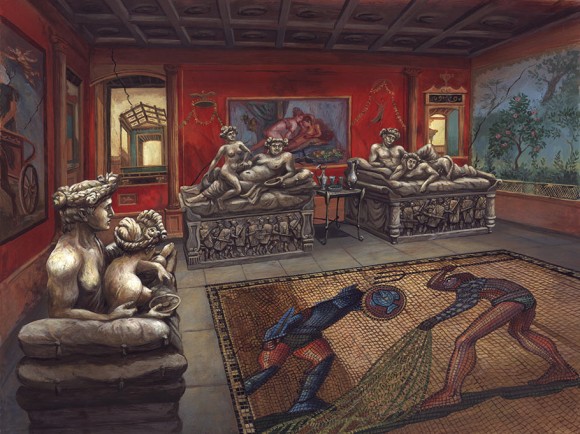
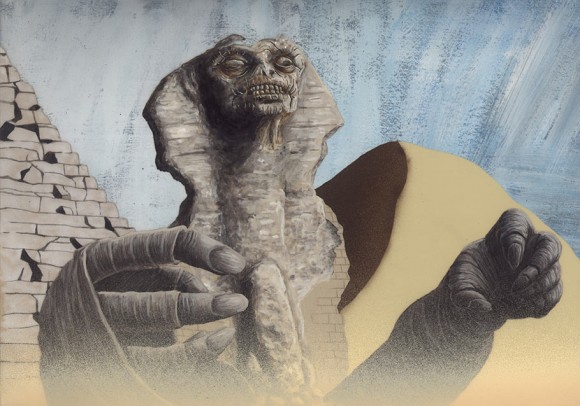
CARTOON BREW: Can you take us through your filmmaking process?
MARCELL JANKOVICS: In most cases I choose the theme and write the script. Having found the subject I begin to think about design, colors, characters, movement, backgrounds, etc. When I had written the script for The Tragedy of Man, I painted one or two pictures for all the 15 sequences.
Following the script I work on the design and the storyboard in parallel, usually more than in one step. But the storyboard is finalized before the design is finished. In my more important films I also do the layout, in some case colored sketches, and I animate too. In János Vitéz and in Fehérlófia I animated one third of the film. I animated my short individual films, and some episodes of the Gusztáv series. Backgrounds and part of the animation is done by other people.
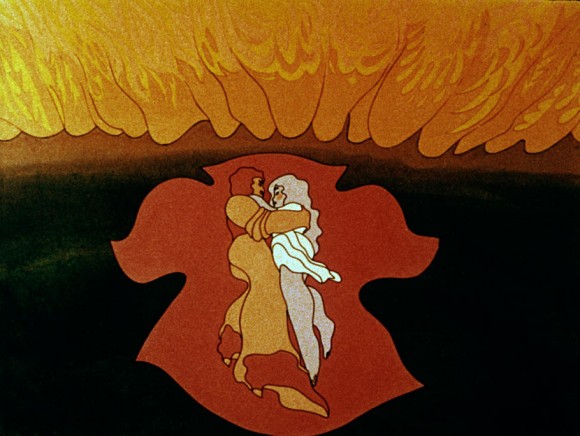

CARTOON BREW: You created Hungary’s very first feature-length animated movie in 1973, János Vitéz (Johnny Corncob), which was very ambitious for the time. How did you do it?
MARCELL JANKOVICS: János Vitéz was commissioned by the government for the 150th anniversary of the birth of poet Sándor Petőfi [who wrote the poem “János Vitéz” based on a folktale]. Because of this, and because the film was indeed the first Hungarian feature-length animation, the project was important for the cultural government. So it received a lot of support.
János Vitéz was a real learning process for the whole Pannonia Film Studio. I was 30 and worked with a team of 150 that included the best Hungarian animators. We had a strict deadline. The film had to be finished in 22 months. It was tough and it was exciting. Everybody was ecstatic. Pannonia had entered a new phase.
CARTOON BREW: What were your budgets like back then?
MARCELL JANKOVICS: On János Vitéz I could spend around $US 47,000, equal today with $US 2.3 million or so. For Fehérlófia I got a similar budget. The crew was a bit smaller, but in turn we had more time to finish it. The expense of The Tragedy of Man is difficult to calculate because of its dragged production, the slow and discontinuous process of seeking and receiving financial support, and the significant inflation at the time. I’d estimate its current value at $US 2.9 million.
CARTOON BREW: How do you feel about your older shorts, series, and feature films compared to your more recent projects?
MARCELL JANKOVICS: I like them. My mother told me, after seeing Sisyphus [Jankovics’s short film, which was nominated for an Oscar in 1974], “Son, you will never make another film as good as this one,” and she was right. That said, one shouldn’t compare a short with a series or a full-length film.
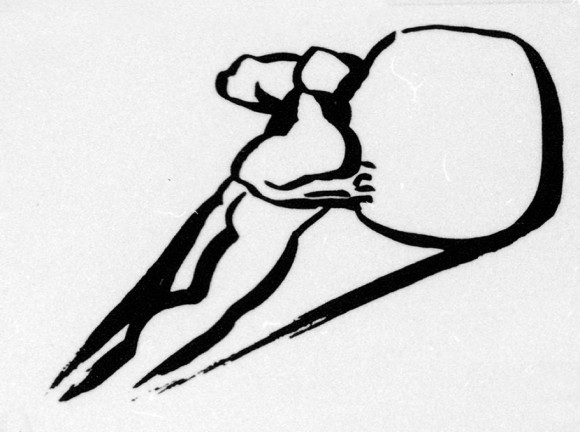

CARTOON BREW: Who do you admire in animation?
MARCELL JANKOVICS: I am very enthusiastic about, and was inspired by, some works of Norman McLaren, John Hubley, Frédéric Back, Richard Williams, Yuri Norstein, and Hungarians Sándor Reisenbüchler, Kovásznai György, István Orosz, and Dóra Keresztes.
CARTOON BREW: What are your thoughts on contemporary animation in Hungary and abroad?
MARCELL JANKOVICS: I rarely watch animated films anymore, but in my domestic and festival experiences every generation seems to produce works of similar quality. The two great differences between then and now are the digital revolution and far less government support for animation. Although I use it, I don’t like digitalization. I hate 3D. Despite all the technical miracles and devices, and the relatively easy way of working nowadays, I don’t envy the youth of today. They barely have the chance to make independent films. I am from the old school: I prefer the old studio system. The old Pannonia Film Studio was a fantastic community. I believe in teamwork, and that was the basis of the success of our films.
CARTOON BREW: Besides directing, designing and animation, you teach quite often. What lesson do you think is most important for animation students to learn?
MARCELL JANKOVICS: Animation can only be learnt through practice—the more the better.
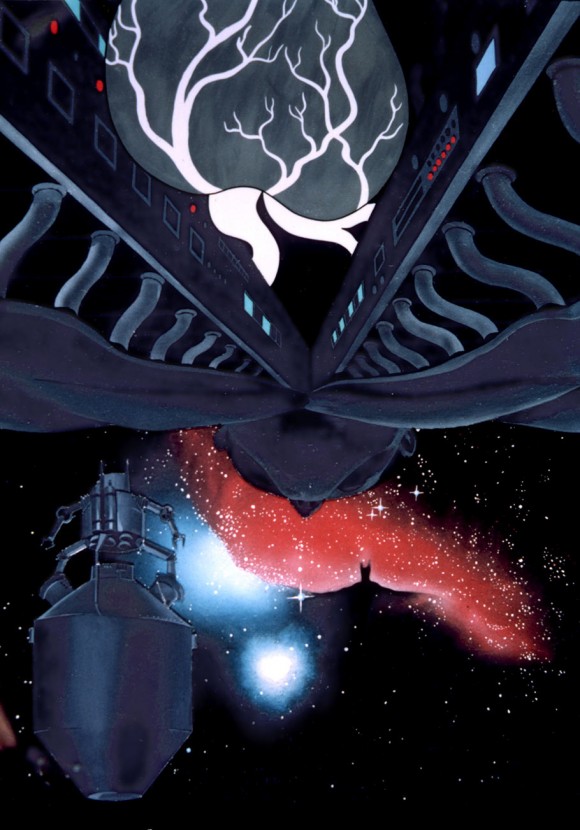
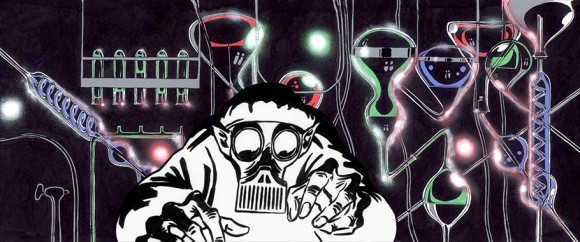
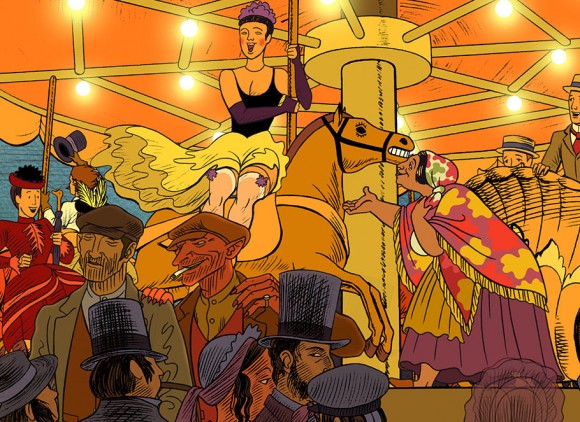
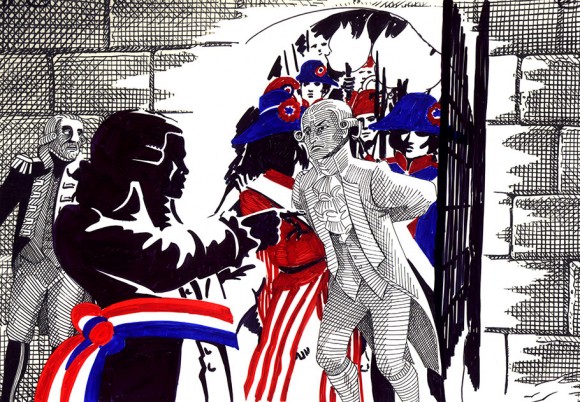

Many thanks to the Hungarian Film Archive and Peter and Kinga Melocco for their help coordinating the interview. With thanks to Kecskemetfilm for supplying images.

.png)